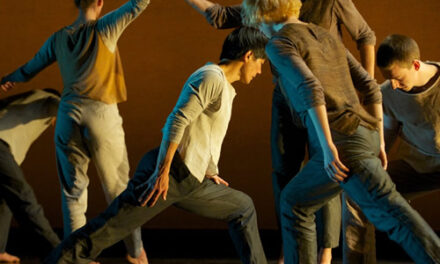Greensboro’s resplendent and recently restored First Presbyterian Church was the ideal venue for the Eastern Music Festival‘s unique All-Vivaldi program. Music director Gerard Schwarz led the mostly string ensemble made up of both faculty and the 2016 Orchestra Fellows with the harpsichord continuo player Marika Bournaki expanding her busy keyboard role. A large audience welcomed the Baroque-themed series back to its original venue after a year’s hiatus. Massive kudos to the programmers who planned the diverse, exceptional program that eschewed the ubiquitous Four Seasons!
Robert Craft credits Igor Stravinsky with the response to the growing Baroque revival, stating that “Vivaldi is greatly overrated – a dull fellow who could compose the same form so many times over.” This is often misquoted as “Vivaldi did not write 400 concertos; he wrote one concerto 400 times.” Like other Baroque composers, Vivaldi’s concertos are typically in three movements, usually fast, slow, and fast. A solo instrument is set against accompanying strings and a continuo, called the ripieno, consisting of a keyboard harpsichord or chamber organ and a few other instruments.
EMF’s seven works demonstrated the extraordinary variety Vivaldi could achieve within the traditional format. As a composer of 46 operas, he brings plenty of drama to the concertos along with innovative treatment of their structure combined with vivid harmonic contrasts, lively rhythms, gorgeous melodies, and flamboyant technical displays. Most of his concertos were written for the exceptional talents of the girls of the Pio Osepedale della Pietà, an orphanage for female children abandoned in Venice. Vivaldi was responsible for teaching theory and the playing of instruments as well as regular composing of concertos and sacred vocal music. Paying visitors generated a lot of cash for the orphanage, as they wanted to hear the famous all girl orchestras who played “behind the screens.”
Schwarz’s seating of the players helped expose Vivaldi’s textures. His podium anchored the harpsichord with first violins, cellos, and double bass on the audience’s left and the second violins and violas on their right. Each half of the concert opened with concertos for strings and harpsichord: Concerto in G minor, RV. 156 and Concerto in A, RV. 158. Both demonstrated the precise ensemble of the players and the composer’s engaging and varied gift for melody.
The second work was the Concerto in E minor for Bassoon, RV. 484 featuring bassoonist George Sakakeeny. All three movements remain in the minor mode but there was no lack of energy or winning melodies as the full range of the bassoon was explored through Sakakeeny’s agile articulation.
One of the most impressive works came next – the Concerto in A minor for Two Violins, RV. 523 with Randall Weiss and Jenny Grégoire as the outstanding soloists. Superb intonation and perfect matching in imitative passages were just a sample of the pleasures of their playing. Conductor Schwarz sat down during the exquisite Largo in which Weiss and Grégoire’s virtuosity was supported by a continuo of Bournaki’s harpsichord, cellist Amy Frost Baumgarten, and double bassist Luciano Carneiro.
The Concerto in C for Piccolo, RV. 443, with the very dexterous Ann Choomack, ended the first half with brilliant stratospheric instrumental fireworks.
After intermission, the String Concerto in A, RV. 158, was followed by another too-seldom-heard and winning double concerto – the Concerto in B-flat for Violin and Cello, RV. 547. This is one of the composer’s rare double concertos for two different solo instruments. Violin and cello juxtapose blended, imitative passages with strongly contrasted ones.
Both violinist Catherine Cary and cellist Neal Cary played with excellent intonation and superb phrasing. Conductor Schwarz again sat down to highlight the soloists’ skills in the Andante, subtly supported by the continuo of Bournaki and Baumgarten. The most brilliant of Vivaldi’s six Opus 10 flute concertos ended the concert. EMF veteran principal flute Les Roettges pulled out the stops for Flute Concerto in F, RV. 433, “La Tempesta de Mare.” His seamless breath control was astonishing as was his articulation in the fastest passages. His tone was gorgeous.
Vivaldi composed more than 500 concertos of which 350 were for solo instruments and strings, 230 for violin, 40 for pairs of instruments, 30 for three or more besides those for woodwinds and a few for brass. Explore more next season! The RV 550s portion of the catalog is packed with winners such as RV. 558 for pairs of violins, recorders, trumpets, mandolins, chalumeaux (early clarinets), theorbos, a single cello and strings.
For more on the Eastern Music Festival’s upcoming performances, see our calendar.












